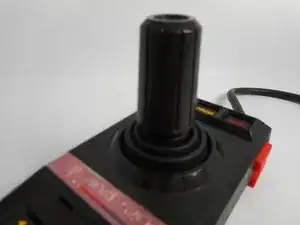
Atari 5200 Joystick Repair
These are some common tools used to work on this device. You might not need every tool for every procedure.
Before delving into your Atari 5200, try our Atari 5200 Troubleshooting page to find a simple solution!
The Atari 5200 (also called the Atari 5200 Super System) is a home video game console introduced in 1982 by Atari, Inc. The Atari 5200 was released as a higher-end complement for the Atari Video Computer System. When the Atari 5200 was launched, the Video Computer System was renamed the Atari 2600. The Atari 5200 was discontinued in 1984; over one million units were sold in the two years the 5200 was produced. Its predecessor, the Atari 2600, sold over 30 million units.
The 5200’s internal hardware is very similar to that of Atari’s 8-bit family, but the software is not directly compatible between the two systems. The Atari 5200 includes an analog joystick and a numeric keypad with start, pause, and reset buttons. The 5200’s joystick is a 360-degree non-centering joystick, while the Atari 2600’s joystick only offered control in eight directions. The 5200 also features four controller ports, where most other systems in 1982 included only one or two ports. It also includes the first automatic TV switch box which allowed users to automatically switch from the regular TV viewing to the game system signal when the Atari system was activated.
While in its prototyping stages, the Atari 5200 was called the “Atari Video System X — Advanced Video Computer System” and was codenamed “Pam,” supposedly after an Atari, Inc. employee. PAM might have actually stood for “Personal Arcade Machine.” Atari Video System X machines are identical to the Atari 5200 but are very rare.